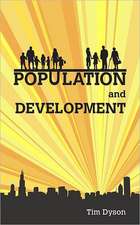Juvenile Delinquency in Europe and Beyond: Results of the Second International Self-Report Delinquency Study
Editat de Josine Junger-Tas, Ineke Haen Marshall, Dirk Enzmann, Martin Killias, Majone Steketee, Beata Gruszczynskaen Limba Engleză Hardback – 15 dec 2009
These insights are based on self-reported information systematically and simultaneously collected from about 70,000 12-15 year old youths in 28 countries. Until recently, the self-report methodology has not been applied on such a large scale in an international context. The results of this survey provide new and unexpected data about those young people who structurally commit criminal acts, as well as on the frequency of the behavior and the conditions that have an impact on offending.
The wealth of descriptions and insights in delinquency of all these countries will be of great interest to scholars, students and practitioners because of the special character of the publication; it is a book of reference to everyone interested in the backgrounds of juvenile delinquency.
| Toate formatele și edițiile | Preț | Express |
|---|---|---|
| Paperback (1) | 811.58 lei 38-44 zile | |
| Springer – 22 aug 2014 | 811.58 lei 38-44 zile | |
| Hardback (1) | 824.11 lei 38-44 zile | |
| Springer – 15 dec 2009 | 824.11 lei 38-44 zile |
Preț: 824.11 lei
Preț vechi: 1084.37 lei
-24% Nou
Puncte Express: 1236
Preț estimativ în valută:
157.71€ • 163.72$ • 131.51£
157.71€ • 163.72$ • 131.51£
Carte tipărită la comandă
Livrare economică 20-26 martie
Preluare comenzi: 021 569.72.76
Specificații
ISBN-13: 9780387959818
ISBN-10: 0387959815
Pagini: 434
Ilustrații: XVI, 434 p.
Dimensiuni: 193 x 260 x 30 mm
Greutate: 1.09 kg
Ediția:2010
Editura: Springer
Colecția Springer
Locul publicării:New York, NY, United States
ISBN-10: 0387959815
Pagini: 434
Ilustrații: XVI, 434 p.
Dimensiuni: 193 x 260 x 30 mm
Greutate: 1.09 kg
Ediția:2010
Editura: Springer
Colecția Springer
Locul publicării:New York, NY, United States
Public țintă
Professional/practitionerDescriere
Juvenile Delinquency in Europe and Beyond: Results of the Second International Self-Report Delinquency Study presents the status of juvenile crime and delinquency and its backgrounds in many of the European Union member states as well as in the United States, Canada, Venezuela and Surinam. The book includes information on key issues in juvenile delinquency such as victimization of young people, alcohol and drug use and its relation to juvenile crime, involvement in youth gangs, immigration, family and school and neighborhood situations. It provides insight into different views on what can be considered juvenile crime; what acts are subsumed in its definition and when we can speak about structural delinquent behavior.
These insights are based on self-reported information systematically and simultaneously collected from about 70,000 12-15 year old youths in 28 countries. Until recently, the self-report methodology has not been applied on such a large scale in an international context. The results of this survey provide new and unexpected data about those young people who structurally commit criminal acts, as well as on the frequency of the behavior and the conditions that have an impact on offending.
The wealth of descriptions and insights in delinquency of all these countries will be of great interest to scholars, students and practitioners because of the special character of the publication; it is a book of reference to everyone interested in the backgrounds of juvenile delinquency.
These insights are based on self-reported information systematically and simultaneously collected from about 70,000 12-15 year old youths in 28 countries. Until recently, the self-report methodology has not been applied on such a large scale in an international context. The results of this survey provide new and unexpected data about those young people who structurally commit criminal acts, as well as on the frequency of the behavior and the conditions that have an impact on offending.
The wealth of descriptions and insights in delinquency of all these countries will be of great interest to scholars, students and practitioners because of the special character of the publication; it is a book of reference to everyone interested in the backgrounds of juvenile delinquency.
Cuprins
Western Europe.- History and Design of the ISRD Studies.- The Netherlands.- Belgium.- Germany.- France.- Switzerland.- Austria.- Anglo-Saxon countries.- Ireland.- Canada.- USA.- Northern Europe.- Finland.- Sweden.- Denmark.- Mediterranean countries.- Portugal.- Spain.- Italy.- Cyprus.- Eastern and Central European countries.- Estonia.- Lithuania.- Poland.- Czech Republic.- Hungary.- Slovenia.- Bosnia and Herzegovina.- Russia.- Armenia.- Latin-American countries.- Venezuela.- Surinam.- The Netherlands Antilles and Aruba.- Synthesis and Outlook.
Notă biografică
Josine Junger-Tas studied Sociology at the Free University of Brussels (Belgium) and obtained her PhD degree in the Netherlands at the University of Groningen. She was employed by the Dutch Ministry of Justice in its Research Institute and was appointed as Director of the Institute in 1989. She was active in the Council of Europe chairing an Expert Committee on Juvenile Delinquency in 1989. In 1992, she was appointed member of its Scientific Council. She was also active in the United Nations, where she also did preparatory work for the UN Criminology congresses.
In 1989, she received the Sellin-Glueck Award from the American Society of Criminology for her ‘Contributions to Criminology’. In 1994, she was appointed professor of Youth Criminology at the University of Lausanne in Switzerland. She taught Self-report methodology at the University of Cambridge for three years and since 2002 she is visiting professor at the University of Utrecht. In 2000, the University of Lausanne awarded her an Honorary doctorate. In the same year with several colleagues, she launched the European Society of Criminology. At the first ESC conference in Lausanne, she was elected the first ESC President.
In November 2007, she received the Distinguished International Scholar Award from the American Society of Criminology.
In 1989, she received the Sellin-Glueck Award from the American Society of Criminology for her ‘Contributions to Criminology’. In 1994, she was appointed professor of Youth Criminology at the University of Lausanne in Switzerland. She taught Self-report methodology at the University of Cambridge for three years and since 2002 she is visiting professor at the University of Utrecht. In 2000, the University of Lausanne awarded her an Honorary doctorate. In the same year with several colleagues, she launched the European Society of Criminology. At the first ESC conference in Lausanne, she was elected the first ESC President.
In November 2007, she received the Distinguished International Scholar Award from the American Society of Criminology.
Textul de pe ultima copertă
Juvenile Delinquency in Europe and Beyond: Results of the Second International Self-Report Delinquency Study presents the status of juvenile crime and delinquency and its backgrounds in many of the European Union member states as well as in the United States, Canada, Venezuela and Surinam. The book includes information on key issues in juvenile delinquency such as victimization of young people, alcohol and drug use and its relation to juvenile crime, involvement in youth gangs, immigration, family and school and neighborhood situations. It provides insight into different views on what can be considered juvenile crime; what acts are subsumed in its definition and when we can speak about structural delinquent behavior.
These insights are based on self-reported information systematically and simultaneously collected from about 70,000 12-15 year old youths in 28 countries. Until recently, the self-report methodology has not been applied on such a large scale in an international context. The results of this survey provide new and unexpected data about those young people who structurally commit criminal acts, as well as on the frequency of the behavior and the conditions that have an impact on offending.
The wealth of descriptions and insights in delinquency of all these countries will be of great interest to scholars, students and practitioners because of the special character of the publication; it is a book of reference to everyone interested in the backgrounds of juvenile delinquency.
These insights are based on self-reported information systematically and simultaneously collected from about 70,000 12-15 year old youths in 28 countries. Until recently, the self-report methodology has not been applied on such a large scale in an international context. The results of this survey provide new and unexpected data about those young people who structurally commit criminal acts, as well as on the frequency of the behavior and the conditions that have an impact on offending.
The wealth of descriptions and insights in delinquency of all these countries will be of great interest to scholars, students and practitioners because of the special character of the publication; it is a book of reference to everyone interested in the backgrounds of juvenile delinquency.
Caracteristici
The sheer amount of comparable information on youth crime and victimization in 30 countries provides a valuable reference for criminal justice researchers
The standardized methodology provides unique insights into the challenges and solutions related to conducting large-scale comparative surveys
The first time that so many “new” European member states are included in a longitudinal study on crime
The standardized methodology provides unique insights into the challenges and solutions related to conducting large-scale comparative surveys
The first time that so many “new” European member states are included in a longitudinal study on crime













